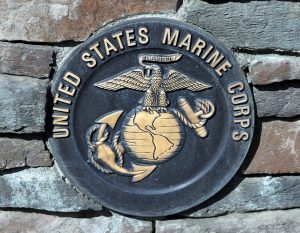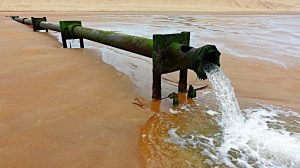 The Camp Lejeune toxic water litigation continues to chug along in the U.S. District Court for the Eastern District of North Carolina, with no major developments. This isn’t too surprising given how it’s still early in the overall litigation. However, there’s been a major development in the administrative claims process.
The Camp Lejeune toxic water litigation continues to chug along in the U.S. District Court for the Eastern District of North Carolina, with no major developments. This isn’t too surprising given how it’s still early in the overall litigation. However, there’s been a major development in the administrative claims process.
Specifically, the U.S. Department of Justice (DOJ) and the U.S. Department of the Navy have announced something called an “Elective Option.” On paper at least, this is designed to help speed up the time it takes for claimants to receive compensation, as well as ease the burden of proving claims.
This may seem like welcome news, because as of the time of this writing, there are almost 100,000 administrative claims filed with the Navy. But a claimant should be vigilant and make sure the compensation offer under this option is reasonable and fair.
Let’s take a look at how this Elective Option process will work.
Background: The Administrative Claims Process
Before filing a lawsuit in court, a potential Camp Lejeune contaminated water plaintiff must first file a Camp Lejeune Justice Act of 2022 (CLJA) administrative claim with the Navy. An individual can only file suit in federal court if the Navy denies the claim or doesn’t make a decision on the claim for six months after filing.
Until recently, there weren’t many updates or signs of progress from the Navy concerning these administrative claims. This meant that for most individuals, any sort of compensation was likely years away. Not only did they have to wait six months after filing an administrative claim before they could go to court, but once in court, they’d probably be stuck in litigation for years. This Elective Option may dramatically shorten the time it takes for eligible individuals to obtain compensation for their injuries.
How the Elective Option Works
To take advantage of the Elective Option (EO), a claimant doesn’t have to do anything in addition to filing an administrative claim with the Navy. The Navy will automatically review all claims for EO eligibility.
If the Navy determines a claim is eligible for the EO, the Navy will refer the case to the DOJ for final review. Assuming the DOJ approves the EO for the claim, the Navy will submit a settlement offer to the claimant.
The claimant then has 60 days to accept or decline the EO settlement offer. If they accept, the claimant can expect payment within 60 days. If the claimant denies the offer, they can choose to withdraw their administrative claim, keep their claim with the Navy for non-EO administrative claim processing or bring suit in federal court (after waiting the necessary six months or having the administrative claim formally denied).
If the Navy decides a claim isn’t eligible for an EO offer, the claim will remain with the Navy for non-EO claims processing. Right now, it’s unclear how these EO-ineligible claims will be processed or how long it will take to process them.
There are a lot more details about the EO process, but to best cover that information, the remainder of this blog post will consist of a Q&A format.
Do I need to Refile My Administrative Claim to Take Advantage of the EO?
No, as the Navy will review all administrative claims submitted to it, even those filed before the announcement of the EO.
Can Individuals Already in Federal Court Take Advantage of the EO?
No, although the DOJ will review cases currently in court to see if they’re eligible for a settlement offer that’s similar to what the plaintiff would have been eligible for if they could take advantage of the EO.
What are the Elective Option Eligibility Requirements?
The first major requirement is that you suffered an eligible injury. The EO recognizes two tiers of injuries, all of which have been identified by the Agency for Toxic Substance and Disease Registry (ATSDR) as being sufficiently linked to contaminants found in the Camp Lejeune water supply. Tier 1 qualifying injuries include:
- Bladder cancer
- Leukemia
- Non-Hodgkin lymphoma
- Liver cancer
- Kidney cancer
Tier 2 qualifying injuries include:
- Systemic sclerosis or systemic scleroderma
- Kidney disease or end stage renal disease
- Parkinson’s disease
- Multiple myeloma
 Assuming a person has suffered an eligible injury, they must show that they were exposed to the Camp Lejeune water (or water from Marine Corps Air Station New River) for at least 30 days. For most people, this will involve showing that they lived or worked at Camp Lejeune for at least 30 days.
Assuming a person has suffered an eligible injury, they must show that they were exposed to the Camp Lejeune water (or water from Marine Corps Air Station New River) for at least 30 days. For most people, this will involve showing that they lived or worked at Camp Lejeune for at least 30 days.
Claimants who allege their exposure occurred while their mothers were pregnant with them will need to demonstrate that their mothers lived or worked at Camp Lejeune for at least 30 days while pregnant.
After these two requirements have been met, a claimant must meet two more conditions. First, they must have been diagnosed or treated for their qualifying injury before August 10, 2022.
Second, the date of the first treatment or diagnosis for the qualifying injury must have occurred within a special time window. Specifically, this first treatment or diagnosis must have occurred at least two years, but no more than 35 years, after the most recent exposure to the contaminated water.
In Part 2, we will look at proving a qualifying injury, proving exposure to Camp Lejeune toxic water, and the potential settlement outlook for this Elective Option. Stay tuned.
 North Carolina Product Liability Lawyer Blog
North Carolina Product Liability Lawyer Blog

